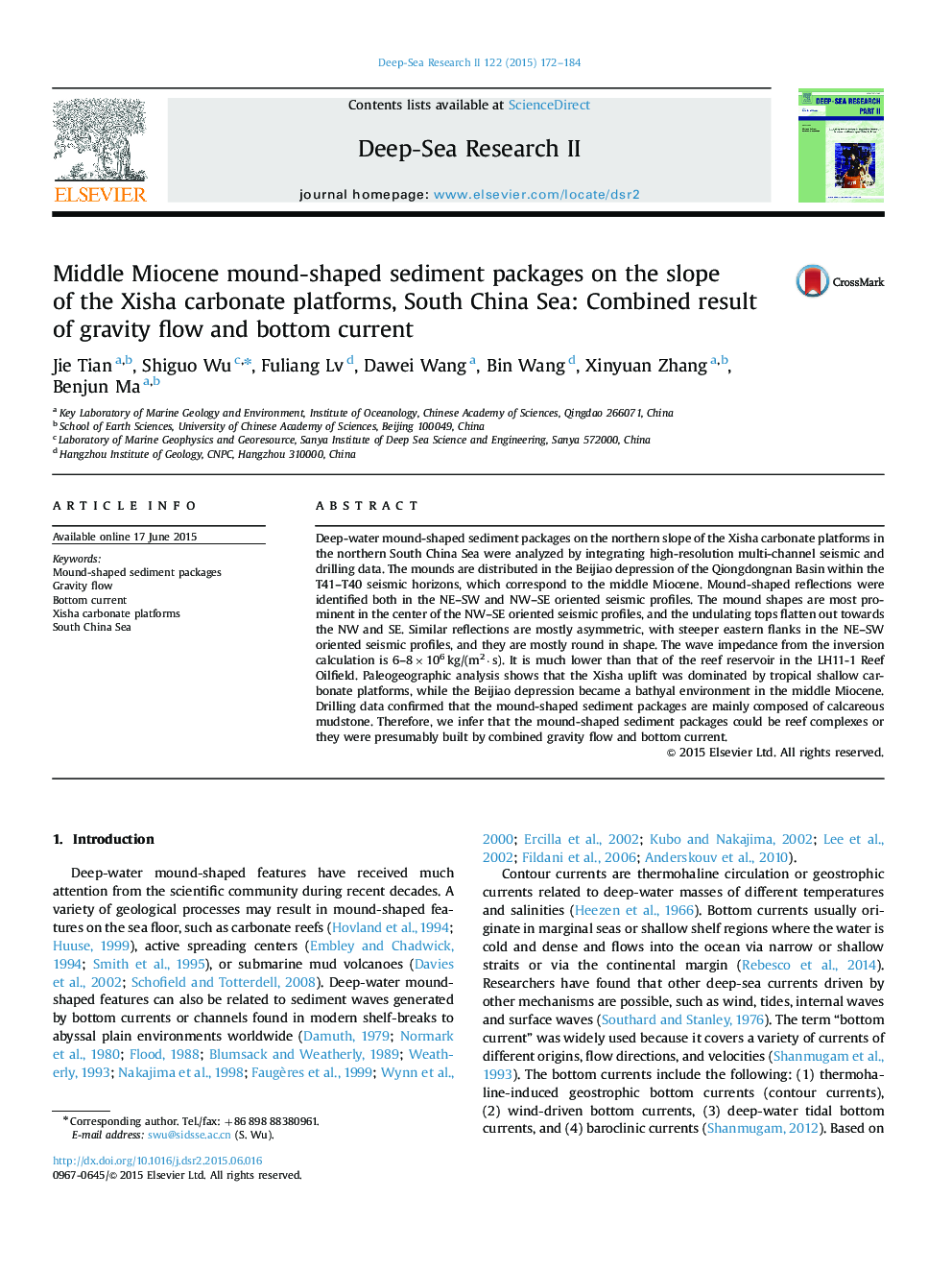| Article ID | Journal | Published Year | Pages | File Type |
|---|---|---|---|---|
| 4536170 | Deep Sea Research Part II: Topical Studies in Oceanography | 2015 | 13 Pages |
Deep-water mound-shaped sediment packages on the northern slope of the Xisha carbonate platforms in the northern South China Sea were analyzed by integrating high-resolution multi-channel seismic and drilling data. The mounds are distributed in the Beijiao depression of the Qiongdongnan Basin within the T41–T40 seismic horizons, which correspond to the middle Miocene. Mound-shaped reflections were identified both in the NE–SW and NW–SE oriented seismic profiles. The mound shapes are most prominent in the center of the NW–SE oriented seismic profiles, and the undulating tops flatten out towards the NW and SE. Similar reflections are mostly asymmetric, with steeper eastern flanks in the NE–SW oriented seismic profiles, and they are mostly round in shape. The wave impedance from the inversion calculation is 6–8×106 kg/(m2·s). It is much lower than that of the reef reservoir in the LH11-1 Reef Oilfield. Paleogeographic analysis shows that the Xisha uplift was dominated by tropical shallow carbonate platforms, while the Beijiao depression became a bathyal environment in the middle Miocene. Drilling data confirmed that the mound-shaped sediment packages are mainly composed of calcareous mudstone. Therefore, we infer that the mound-shaped sediment packages could be reef complexes or they were presumably built by combined gravity flow and bottom current.
